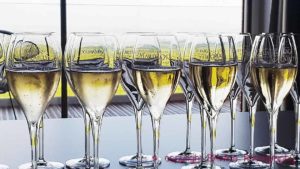Art and wine: Mouton-Rothschild and Taittinger
The prestigious Bordeaux property Château Mouton-Rothschild and the famous champagne house Taittinger are well known for their linking of art and wine. Mouton Rothschild decorates the label of each new vintage with a painting by




